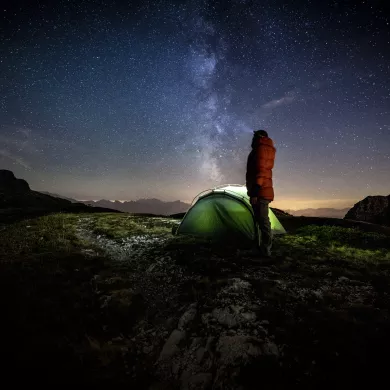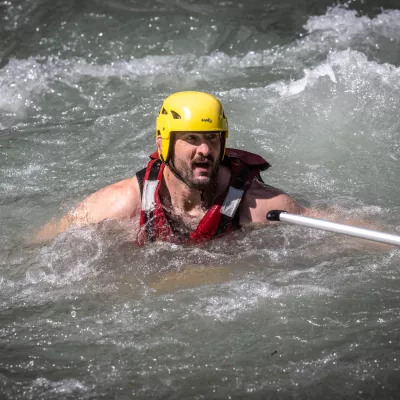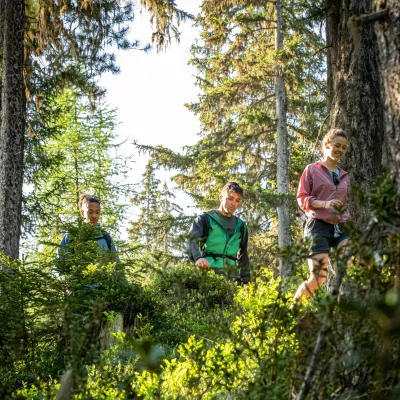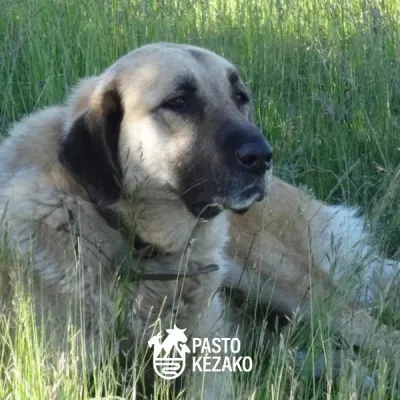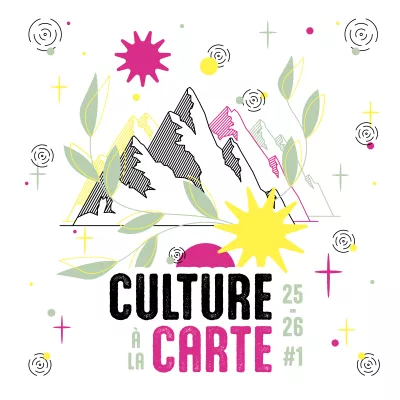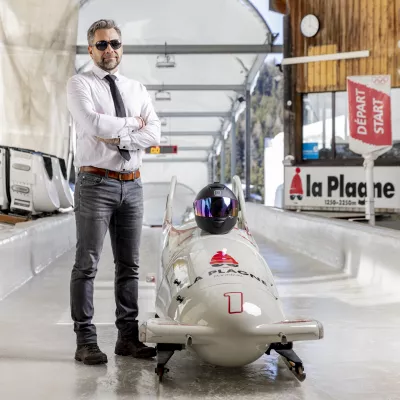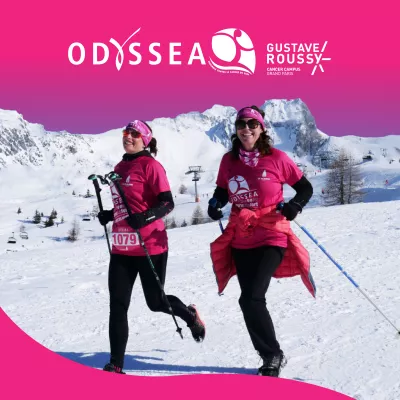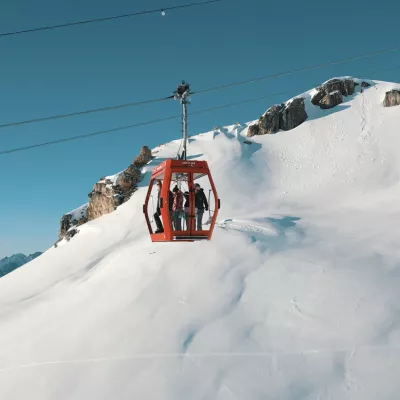Not the time, not the equipment, not the shape, not the codes... You think trekking is not for you? What if you just needed a little reassurance? Warning: reading this article could well tip you over to the brighter side of micro-adventure in the wilderness...
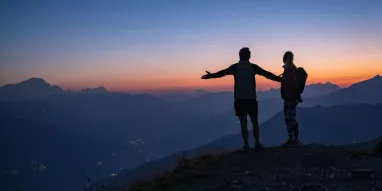
1. " I only have 2 or 3 days to devote to my backpacking trip".
With so many stories of adventurers taking a sabbatical year to cover thousands of kilometers across Europe (or the world), you'd almost forget that it's perfectly possible to hiking 2 or 3 days, without having to burn all your CP*. You don't have to set out on the Camino de Compostela to get a change of scenery!
You can choose a 30-kilometer loop and spend the night in the mountains halfway along the route. Or opt for a round-trip to a point of interest some fifteen kilometers from your car, sleep there and then return home the next day. It's much easier to get away for a weekend than to set aside several weeks' vacation to discover a GR from A to Z!
🌿 The "green" tip: make your journey from home to hiking as consistent as possible with your desire for nature. Avoid, for example, driving 7 hours to walk "only" 2 days. Start by looking at trails close to home, or easy to reach by train.
💡 An idea for a 2/3-day itinerant hike: the Tour de la Vallaisonnay. Good to know: it's possible to do the tour over 5/6 days if you're looking for a slower, more contemplative stroll (in total, you'll find 9 refuges along the way; that's 1 refuge every 3 hours or so of hiking).
Read more
*Paid vacations
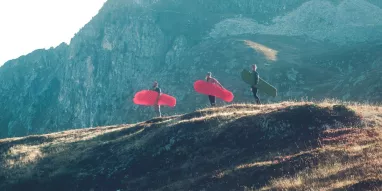
2. "I don't have a tent, mattress, cooking utensil, etc.".
Self-guided itinerant hiking can quickly become a small budget... Compact, lightweight tents, insulating air mattresses, food preparation equipment, etc. The list is long, and the cost is considerable. The list is long, and the initial investment isn't worth it until you're sure you're hooked on the activity.
But don't give up on your multi-day hiking plans! Choose an itinerary that includes mountain refuges. You can sleep there (usually in dormitories), eat with other hikers, order a picnic for your next lunch on the trail, wash up... All you need to bring is a silk sheet (also known as a "meat bag") for the night. So you can lighten your pack... and your hiking budget! There will always be time to invest in bivouac gear over time, should you feel the urge to multiply your wilderness escapades.
🌿 The "green" tip: keep an eye out for bargains available on the second-hand market; ideal for equipping yourself on a budget (and helping to reduce the amount of equipment produced by manufacturers).
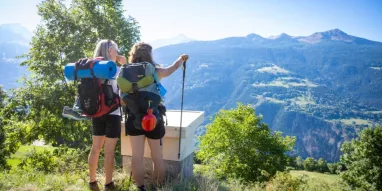
3. "I'm afraid I'm not in good enough shape".
Backpacking isn't all rest and relaxation. As the days go by, you'll rack up kilometers and elevation changes that will put your thighs and calves to the test. Your back and shoulders will also be put to the test by the weight of your rucksack. There are a few tips to help you walk for longer without losing your smile:
- Prepare yourself physically a few weeks before your tour: PPG (General Physical Preparation) exercises, stair climbing, walks of increasing difficulty (first 1h or 2h; then 3h, 4h, 5h...).
- Optimize the weight of your rucksack (sleeping in a refuge will save you the weight of your tent and meals, for example).
- Go gradually: start with a 2 or 3-day itinerant hike to test your physical condition before considering longer tours.
- Hire an AMM(Accompagnateur en Moyenne Montagne): he'll be able to concoct an itinerary suited to your current fitness, with stages that aren't too long, a reasonable gradient and points of interest that are just as remarkable.
💡 Two ideas for round-trip 2-day/1-night hikes: refuge de Plaisance (at the gateway to the Vanoise National Park) or refuge de La Glière (in the Vanoise National Park). Starting point for both itineraries: Champagny-le-Haut.
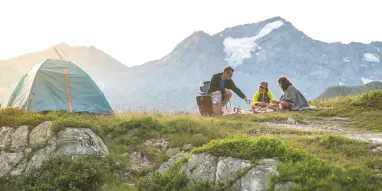
4. "Eating seeds and freeze-dried food? Bof bof..."
Food is a crucial point when organizing a touring hike. Firstly, because to walk well, you have to eat well. But also because it represents a significant part of the weight you'll have to carry. So what can you do to hike light without sacrificing your taste buds?
First piece of good news: you don't have to eat seeds and freeze-dried food! For an itinerant hike lasting a few days, it's perfectly possible to opt for half-board in a refuge without breaking the bank. That way, you can start the day on the right foot with a real breakfast, and end it in style with a home-cooked meal to share with a table of hungry hikers.
Second piece of good news: you can also save yourself the weight of your lunches! Most refuges offer take-away picnics. All you have to do is book it in advance, and it's ready when you're back on the trails. It's a lot lighter than having to carry a picnic basket and meals for every lunchtime...
🌿 The "green" tip: take reusable containers with you to put the picnic you've ordered at the refuge.
💡 An idea for a gourmet hike: the Laisonnay refuge... where you'll dine by candlelight! (Reservations required)

5. " I only sleep well in bed".
Recovery is essential when you plan to walk for several days in a row. Unfortunately, not all of us are able to fall asleep anywhere... Are you one of those people who can't sleep a wink once they leave their usual cocoon? Here are three tips to give your body the rest it needs (short of 8 hours of deep sleep):
- Take along earplugs and an eye mask to escape your neighbor's snoring and the sun that rises far too early.
- Test your inflatable mattress before you leave (some people prefer a slightly under-inflated mattress, for example), and complete your sleeping arrangements with a light, compact bivouac pillow (likewise, it's best not to over-inflate it for greater comfort).
- Instead of stressing about the inexorably spinning needles, let your mind wander from one positive thought to another (the good memories of the day, the landscapes you're looking forward to discovering tomorrow etc.); after all, just lying down and closing your eyes contributes to the rest your muscles crave. And before you know it, you'll be back in bed. All's well, in fact!
🌿 The "green" tip: remember that when you're backpacking, you're in the garden of mountain wildlife. So that the ibex, chamois and marmots can also sleep soundly, be discreet both day and night 🤫
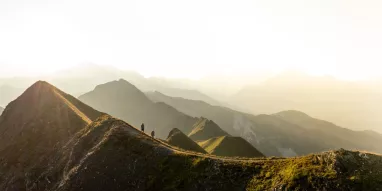
6. "It doesn't reassure me to be far from everything..."
Does the word "roaming" worry you? Don't worry: in the Vanoise, you're far from the crowds... but not too far from civilization 😉 Throughout the day, you'll come across day hikers, trekkers, mountain guides with their clients, refuge wardens ready to welcome the day's hikers and so on. In short, you'll never find yourself totally isolated, with not a living soul for miles around. And the little yellow directional signs will clear up your doubts at every intersection should your sense of direction ever fail you.
🌿 The "green" tip: staying on the trails isn't just a question of safety; it's a good practice essential to protecting the environment in which you're evolving. By following the marked trails, you're protecting mountain flora, preserving the quiet areas in which small animals, birds and mammals flourish, and limiting the risks of erosion.
💡 A good idea for the worried (and all budding adventurers): take part in a 1 or 2-day mountain survival and self-sufficiency course! The program for these courses is much less worrying than the name might suggest (how to find your way around, build a shelter, choose the right location for your bivouac in authorized areas, manage your drinking water, trigger help...). Ages 8 and up.
Reserve your place
7. "Peeing/pooping in the wild? No thanks!"
Admit it, this detail gets stuck in your head when you're dreaming of adventure in the modern comfort of your home sweet home! We won't go into too much detail here, as the Internet is full of practical advice on the subject (you'd be surprised at the number of Youtube tutorials dedicated to the subject...).
On the other hand, one little tip we can give you is simply to organize your stages so as to sleep in a refuge (or to bivouac around one). That way, you'll have access to sanitary facilities (and nature will thank you!).
🌿 Green tip: never leave toilet paper behind when you relieve yourself in nature! Move away from the trail and watering holes (several dozen meters), do your business (there are even small, ultra-light shovels to bury your needs neatly), and take your toilet paper with you in a mini trash bag if you really need to use it. You'll throw it away when you get home.
💡 Good to know: bivouacs are only allowed near refuges in the Vanoise National Park. The price of a tent pitch is very affordable (often less than 10 euros) and includes access to sanitary facilities. In some cases, booking is compulsory (by email or via a booking form); in others, you simply need to turn up on the day. Don't forget to bring cash with you (credit cards are not generally accepted in the mountains). If you wish, you can even book breakfast and/or dinner and/or a picnic.
Useful resources :
- Dormir en refuge, mode d'emploi (an indispensable guide for beginners... and good reminders for regulars!)
- The list of refuges in the Vanoise National Park (to compare good addresses and book your nights)
- The art of responsible bivouacking in the Vanoise (where and when to pitch your tent, how to book your pitch...)
- Contact details for AMM (Accompagnateurs en Moyenne Montagne) in La Plagne and its villages (to book a guided hike for a day or several days)

